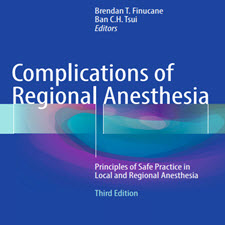Diabetes and Aging-related Complications
ABSTRACT
Renal senescence is accompanied by a gradual decrease in its function. Although it rarely causes clinical problems per se, superimposition of various diseases, such as diabetes, may accelerate this functional decline. Recent research has revealed some of the complex mechanisms of how diabetes promotes the aging process in the kidney, including the pathogenic roles of hemodynamic changes, tubulointerstitial hypoxia, oxidative stress, advanced glycation end-products, and impaired autophagy. Diabetes also modulates aging-related signaling pathways, such as sirtuins and mammalian target of rapamycin. Current therapeutic strategy for diabetic kidney disease consists of glycemic control and antihypertensive treatment with renin- angiotensin system inhibitors. However, they fail to fully prevent the progression of diabetic kidney disease, raising an urgent need for novel therapeutic methods. Some pharmacological agents are being developed based on the knowledge of hemodynamic and molecular basis of diabetes- and aging-related kidney function decline.
INTRODUCTION
Aging is a universal process that affects all organs including the kidney. Even in healthy individuals, glomerular fltration rate (GFR) starts to decline at 30 years of age and proceeds at the rate of approximately 8 ml/min/1.73 m2 per decade . This loss in renal function is largely attributed to hemodynamic changes within the kidney and age-related vulnerability to physiological stress, such as hypoxia and oxidative stress. The rate of kidney function decline may increase with superimposition of various diseases. Diabetes is one of the strong drivers of this decline, and it accelerates the process of aging through several different mechanisms, such as hemodynamic changes, endothelial dysfunction, tubulointerstitial hypoxia, oxidative stress, accumulation of advanced glycation end-products (AGEs), and impaired autophagy. Diabetes also modulates some aging-related signaling pathways including sirtuins and mammalian target of rapamycin (mTOR). This chapter discusses the pathogenesis of diabetic kidney disease (DKD) in relation to aging process and introduces some potential therapeutic methods to cope with diabetes-related kidney function decline.
چکیده
پیری کلیه با کاهش تدریجی عملکرد آن همراه است. گرچه به ندرت مشکلات بالینی را در خود ایجاد می کند، سوء برداشتن بیماری های مختلف مانند دیابت ممکن است این کاهش عملکرد را تسریع کند. تحقیقات اخیر برخی از مکانیسم های پیچیده ای را که چگونه دیابت باعث بروز فرایند پیری در کلیه می شود، از جمله نقش های پاتوژنیک تغییرات همودینامیک، هیپوکسیا توپی لگنی، استرس اکسیداتیو، محصولات پیشرفته گلیساسیون و اختلال در اتوفایگی را نشان می دهد. دیابت همچنین مسیرهای سیگنالینگ مرتبط با پیری مانند سیرتویین و هدف پستانداران رپامایسین را مدول می کند. استراتژی درمانی کنونی برای بیماری کلیوی دیابتی شامل کنترل گلیسمی و درمان ضد فشار خون با مهارکننده های سیستم رنین – آنژیوتانسین می باشد. با این حال، آنها قادر به جلوگیری از پیشرفت بیماری کلیوی دیابتی نیستند و نیاز فوری به روش های جدید درمان را پیش می برند. برخي عوامل دارويي براساس آگاهي از مبناي هموديناميك و مولكولي كاهش عملكرد كليه در ارتباط با ديابت و مرتبط با سن توسعه يافته اند.
مقدمه
پیری یک فرآیند جهانی است که بر تمام اعضای بدن مانند کلیه تاثیر می گذارد. حتی در افراد سالم، میزان فلتر گلومرولی (GFR) در سن 30 سالگی شروع به کاهش می کند و با نرخ تقریبی 8 میلی لیتر در دقیقه / 1.73 متر مربع در هر دهه شروع می شود. این از دست دادن عملکرد کلیوی به طور عمده به تغییرات همودینامیکی در معرض آسیب پذیری کلیه و سن نسبت به استرس های فیزیولوژیکی مانند هیپوکسی و استرس اکسیداتیو می پردازد. با کاهش بیماری های مختلف، میزان کاهش عملکرد کلیه ممکن است افزایش یابد. دیابت یکی از محرک های قوی این کاهش است و روند آن را از طریق مکانیزم های مختلف مختلف مانند تغییرات همودینامیک، اختلال عملکرد اندوتلیال، هیپوکسیا توموگرافی، استرس اکسیداتیو، انباشت محصولات پیشرفته گلیسایی (AGE ها) و اختلالات autophagy دیابت همچنین برخی از مسیرهای سیگنالینگ مربوط به پیری شامل سیتویین و هدف پستانداران رپامایسین (mTOR) را تعدیل می کند. این فصل پاتوژنز بیماری کلیه دیابتی (DKD) در ارتباط با روند پیری را مورد بحث قرار می دهد و برخی از روش های بالقوه درمان را برای مقابله با کاهش عملکرد کلیه های مرتبط با دیابت معرفی می کند.
Year: 2016
Publisher : SPRINGER
By : Sho-ichi Yamagishi
File Information: English Language/ 211 Page / size: 4.22 MB
سال : 1395
ناشر : SPRINGER
کاری از : دیمیتری کروشینسکی · بوریس گلدنژورن
اطلاعات فایل : زبان انگلیسی / 211 صفحه / حجم : MB 4.22

![Diabetes.and.Aging-related.[taliem.ir]](https://taliem.ir/wp-content/uploads/Diabetes.and_.Aging-related.taliem.ir_.jpg)
![Diabetes.and.Exercise.From.Pathophysiology.to.Clinical.Implementation.[taliem.ir] Diabetes.and.Exercise.From.Pathophysiology.to.Clinical.Implementation.[taliem.ir]](https://taliem.ir/wp-content/uploads/Diabetes.and_.Exercise.From_.Pathophysiology.to_.Clinical.Implementation.taliem.ir_.jpg)
![Nutrition.and.Diet.in.Maternal.Diabetes.[taliem.ir] Nutrition.and.Diet.in.Maternal.Diabetes.[taliem.ir]](https://taliem.ir/wp-content/uploads/Nutrition.and_.Diet_.in_.Maternal.Diabetes.taliem.ir_.jpg)
![Emergency Department…[taliem.ir] Emergency Department...[taliem.ir]](https://taliem.ir/wp-content/uploads/Emergency-Department...taliem.ir_.jpg)
![Managing.Complications.in.Glaucoma.Surgery.[taliem.ir] Managing.Complications.in.Glaucoma.Surgery.[taliem.ir]](https://taliem.ir/wp-content/uploads/Managing.Complications.in_.Glaucoma.Surgery.taliem.ir_-1.jpg)



![Relationship between FDI, foreign ownership restrictions, and technology[taliem.ir]](https://taliem.ir/wp-content/uploads/Relationship-between-FDI-foreign-ownership-restrictions-and-technologytaliem.ir_-150x150.jpg)
![Early.Repolarization.Syndrome.[taliem.ir]](https://taliem.ir/wp-content/uploads/Early.Repolarization.Syndrome.taliem.ir_-150x150.jpg)
دیدگاه خود را ثبت کنید
تمایل دارید در گفتگو شرکت کنید؟نظری بدهید!